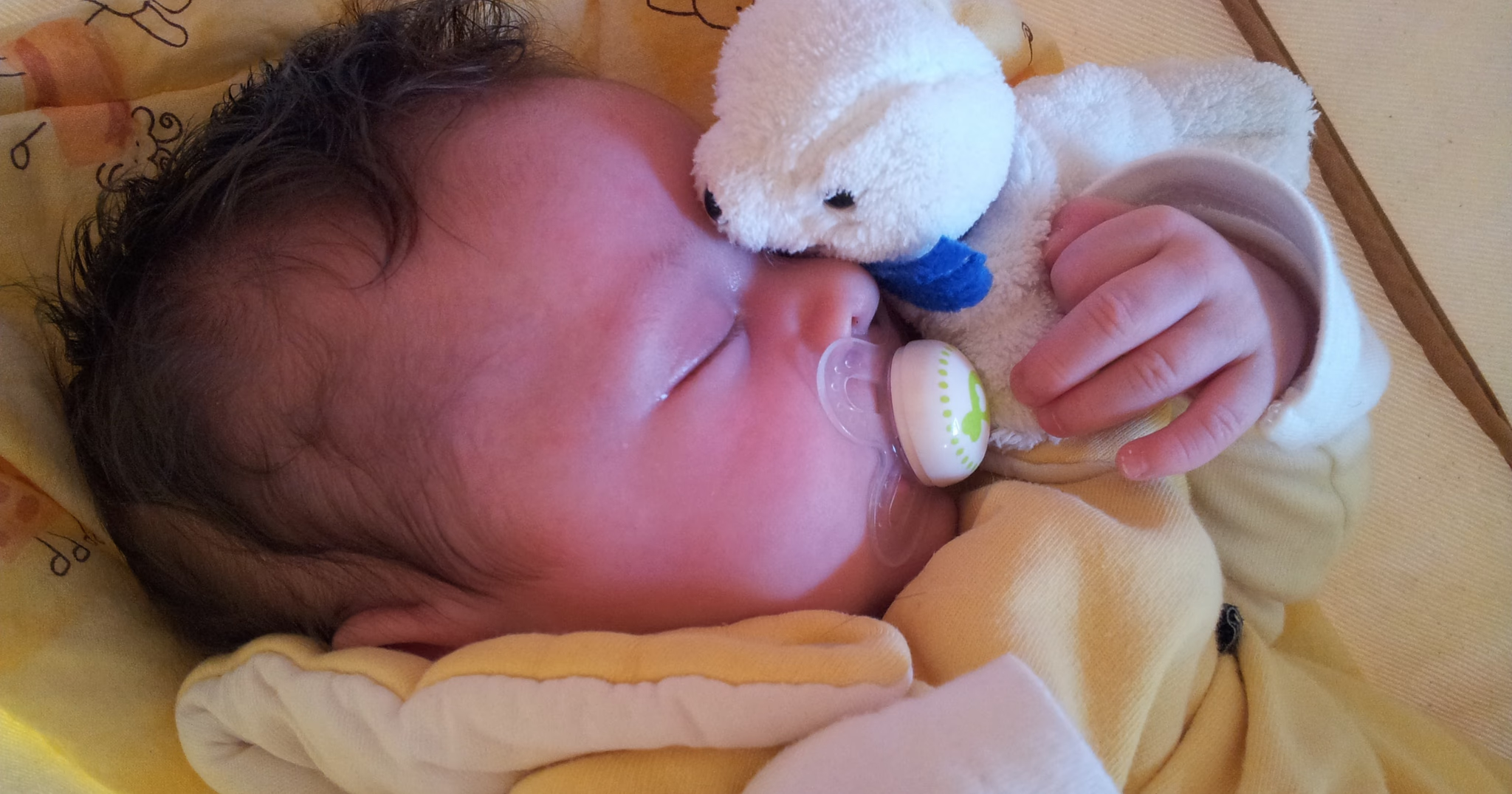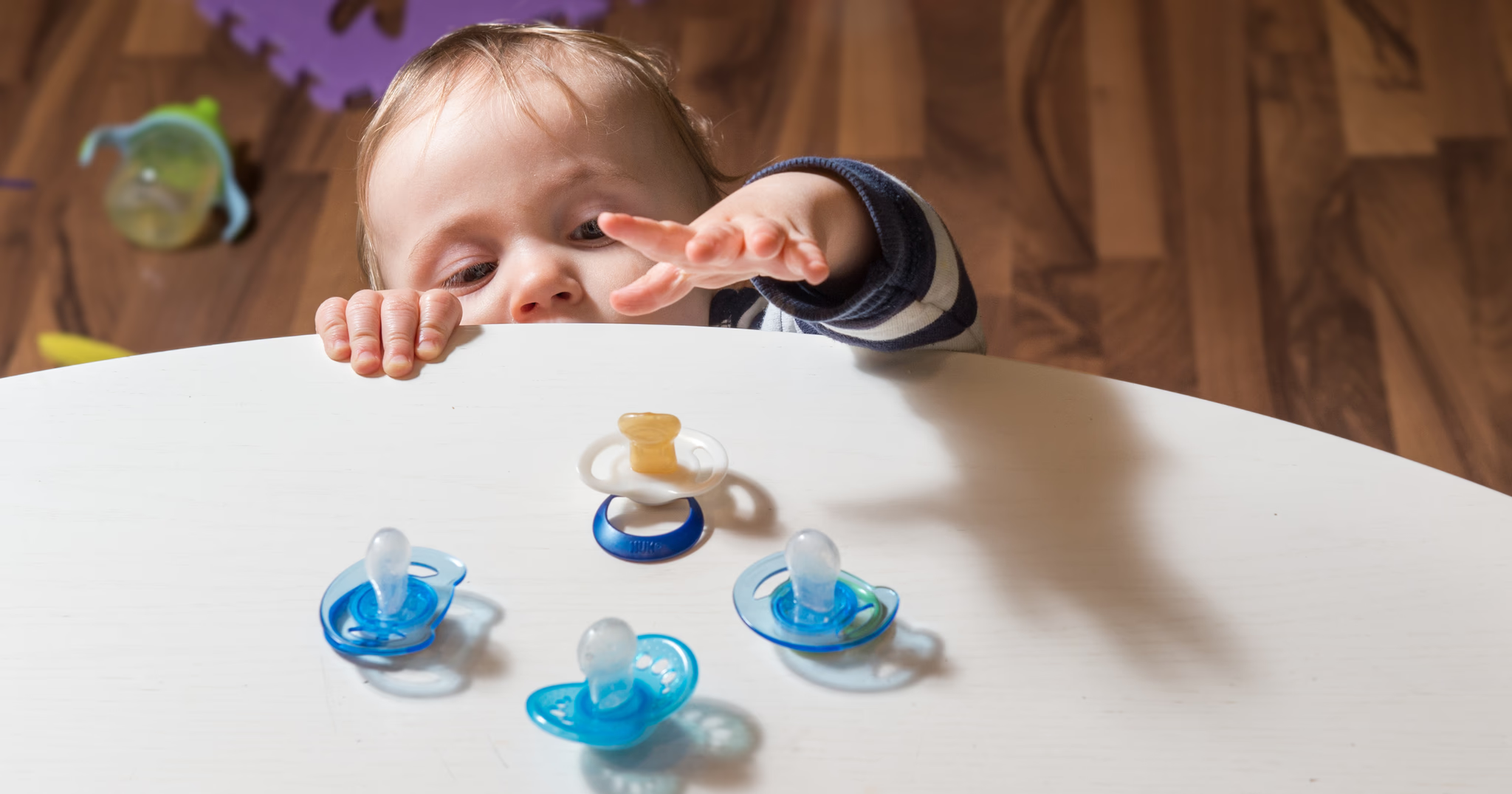For many new mums, one of the first pieces of advice they hear in the hospital is this: “Avoid offering a bottle or dummy until breastfeeding is well-established.”
The idea behind this advice is that introducing other feeding methods too soon can lead to nipple confusion, where a baby struggles to switch between breast and bottle or refuses the breast entirely.
While this advice comes from a good place, I’d like to offer a more nuanced perspective.
After working with thousands of families, I’ve found that avoiding bottles or dummies altogether isn’t always practical—and it might even backfire for some families later on. Let’s unpack this topic so you can decide what’s best for your baby and your family.
The Magic of the Suck Reflex

Babies are born with an innate suck reflex—one of their first survival mechanisms. This reflex allows a newborn to root, latch, and feed at the breast almost instinctively. It’s incredible to watch newborns navigate their way to the breast, driven by that in-built programming. It’s also why we see those heartwarming videos of babies immediately suckling after birth.
However, as beautiful as this instinct is, any seasoned parent knows that babies will suck on just about anything they can get into their mouths. Fingers, a muslin corner, or even Dad’s nose—it’s fair game! That’s because newborns aren’t picky in those early days. For them, suckling isn’t just about food; it’s a source of comfort, self-soothing, and a way to regulate their emotions.
What Exactly Is Nipple Confusion?

The term “nipple confusion” suggests that if babies are introduced to dummies or bottles too early, they might become “confused” about how to breastfeed. While it’s true that sucking on a bottle is different from breastfeeding, the reality is a little more complex.
Nipple confusion doesn’t happen to all babies. Some switch effortlessly between breast, bottle, and dummy without skipping a beat, while others might struggle with just one change. What’s most important is ensuring that breastfeeding is well-established in the early weeks, so your baby can latch effectively, feed efficiently, and stimulate your milk supply.
If breastfeeding is going smoothly, the occasional use of a bottle or dummy is unlikely to throw everything off course. In fact, introducing these tools at the right time can make life a lot easier for some families.
When Should I Introduce a Dummy or Bottle

So, when’s the best time to introduce a bottle or dummy? My recommendation is to hold off during the first 3 weeks, especially if breastfeeding is your primary feeding method. These early weeks are crucial for establishing a solid breastfeeding routine, helping your baby master their latch, and ensuring your milk supply is consistent.
After those first few weeks, if things are going well, introducing a dummy or bottle can be helpful. These tools aren’t just conveniences—they’re tools that can support your baby’s feeding and self-soothing needs while giving you more flexibility.
Why Timing Matters

Here’s an important consideration: waiting too long to introduce a dummy or bottle can lead to another challenge—outright rejection. By around 10-12 weeks, many babies become far more selective about what they’ll accept. If they haven’t had consistent exposure to a bottle or dummy by this point, they may flat-out refuse it.
This can be especially tricky if you plan to transition to mixed feeding, need to return to work, or simply want the option of having someone else feed your baby occasionally. Babies thrive on familiarity, so introducing a bottle or dummy earlier—but not too early—helps them get used to it as part of their feeding routine.
Using Dummies and Bottles Thoughtfully

If you decide to introduce a dummy or bottle, here are some tips to do it in a way that supports your breastfeeding journey:
- Start Small: Begin with occasional use rather than making it a regular habit. This ensures your baby remains primarily focused on breastfeeding while still learning to accept other feeding methods.
- Choose the Right Timing: Avoid introducing a dummy or bottle during a time of breastfeeding struggles, such as a growth spurt or cluster feeding period. Wait for a calm and steady phase in your baby’s feeding routine.
- Use It Strategically: A dummy can be a great tool for comforting your baby during non-feeding times, such as settling for sleep or during car rides. A bottle can be helpful when you need a break or want someone else to take over a feed.
- Prioritize Breastfeeding: Whenever possible, breastfeed first to maintain your milk supply and ensure your baby continues to master their latch.
The Bottom Line

Nipple confusion is a real possibility, but it’s not an inevitability. With careful timing and a thoughtful approach, most babies can successfully switch between breast, bottle, and dummy without any long-term issues.
Remember, every baby is different. Some babies take to a dummy or bottle immediately, while others need time to adjust. Trust your instincts, pay attention to your baby’s cues, and don’t be afraid to experiment with what works for you.
Introducing a dummy or bottle doesn’t have to be an all-or-nothing decision. When used thoughtfully, these tools can become helpful additions to your parenting toolkit—supporting both your baby’s needs and your family’s well-being.
Above all, remember that your confidence and connection with your baby matter far more than any specific feeding method. You’ve got this!

